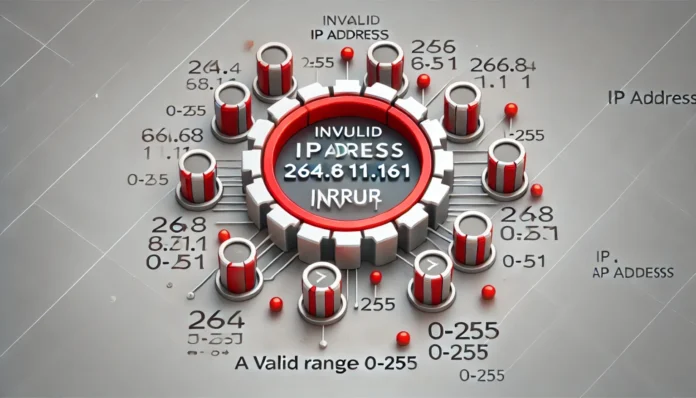Is 264.68.111.161 a valid and usable IP address? This is one among many questions that pop up during IP addressing basics exploration. The next question is regarding identifying between IPv4 and IPv6 because this article will tell you if 264.68.111.161 is indeed a valid IP address.
Understanding IP Addressing: What It Is
By definition, therefore, an IP address constitutes a numeric label applied to devices within a particular network. It serves two primary roles: host identification and communication between hosts. Generally, the formatting rules applicable for such addresses depend on whether they are defined under IPv4 or IPv6.
Is 264.68.111.161 a Valid IPv4 Address?
Now that we know everything about the basics of IP addressing, it’s time to ask whether 264.68.111.161 can be classified as a valid IPv4 address or not. Since an IPv4 address is composed of four octets (0 through 255), each portion must fall within this domain.
The first flaw is that the digit 264 in 264.68.111.161 exceeds the maximum value of 255. Thus, this disqualifies the address outright according to IPv4 rules. Any address containing figures greater than 255 cannot stand as a valid IPv4 address.
Furthermore, networking systems and routers would reject this address, as it did not follow the IPv4 standard. Therefore, if you tried to set a device to 264.68.111.161, you would see an error quickly enough.
What About IPv6?
Unlike IPv4, which it is different, the addresses of IPv4 have limited themselves to 32 bits; thus, it allows only 228 different addresses; IPv6 employs 128-bit addresses with hexadecimal. For this reason, an IPv6 address would never look like an IPv4 address.
Since 264.68.111.161 uses the form intended for IPv4, and as it’s not in the hexadecimal form outlined for IPv6, it is pretty clear from this that such an address is not a member of IPv6 as well. In the same vein, even if were we to transform 264.68.111.161 into a hexadecimal form, it would not translate into any valid configuration under the title of an IPv6 structure. Hence, that address would also be invalid under the rules of IPv6.
Common Misconceptions and Mistakes
It is the stage that needs to be well-explained concerning common mistakes related to the validation of IP addresses. Sometimes, there are mistyped addresses, which may end up taking an invalid form. For instance, an individual intending to e-mail might accidentally give the wrong input.
An Overview of IP Address Validation:
As we noted, 264.68.111.161 is an invalid IP address. However, many methods can be employed to ascertain the validity of an unfamiliar IP.
- Manual Inspection – The simplest way is to check each octet to see that it falls in the range of 0 through 255.
- Online Validators for IP Addresses – Various free online tools can help confirm if the address exists.
- Programming Validation – Automated validation will require writing scripts in Python, Bash, etc., to confirm valid IPs.
- Network Configuration Testing – Another method is attempting to assign the IP address to the configuration of some network device. A rejection by the system implies it is likely invalid.
Why This Matters?
Even though verifying IP addresses may seem trivial, it has quite far-reaching significance in the fields of networking, security, and system administration. For example, an invalid IP address entered in network settings might lead to network connectivity problems. Sometimes in cybersecurity, attackers use spoofed or malformed IP addresses to elude detection. Therefore, the more adept one is at distinguishing between valid and invalid addresses, the greater the protection offered to the networks and the more reliable they become.
Furthermore, internet standards keep evolving, and one good reason to learn the basic concepts of IP address assignment is to continue to be relevant in future network technologies. For example, as the world shifts to IPv6, more and more people will find it helpful to have basic knowledge of both protocols.
Conclusion
To conclude, 264.68.111.161 is not a valid address under either IPv4 or IPv6. The fact remains that since IPv4 addresses need each octet to be in the range of 0-255, the 264 immediately disqualifies it. Furthermore, IPv6 uses completely different standards; this address looks nothing like any IPv4 address. Therefore, no device can adopt this address, nor can it be configured in any functional network.



